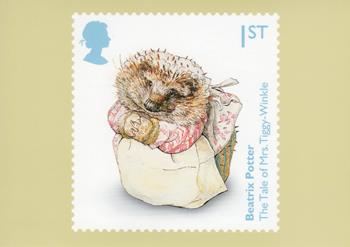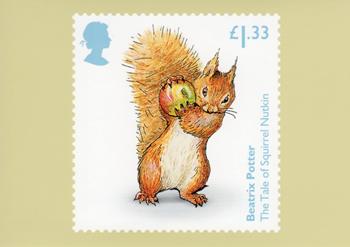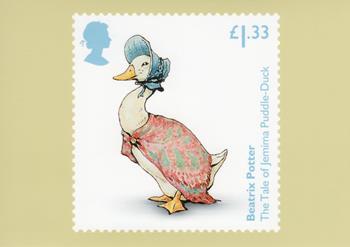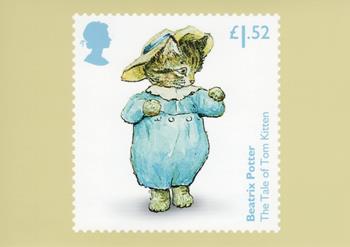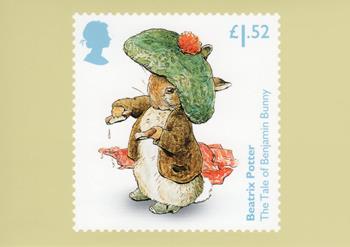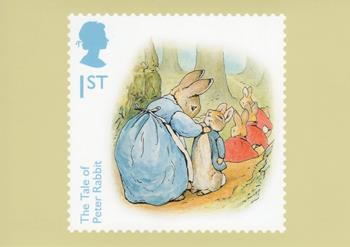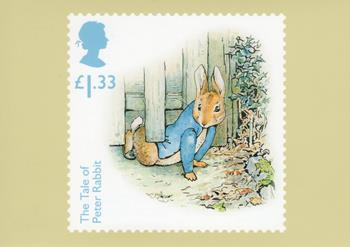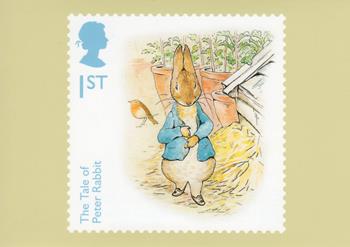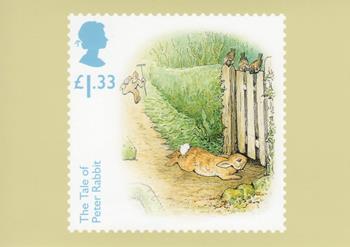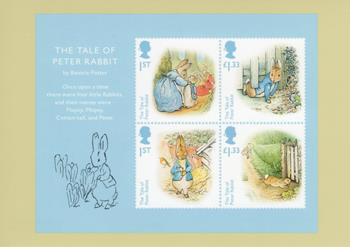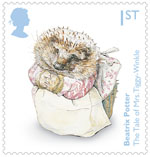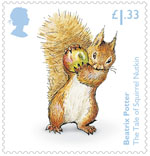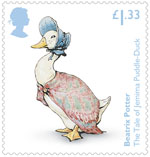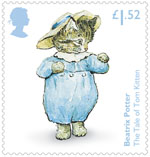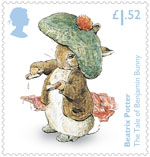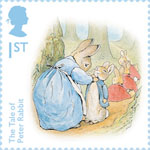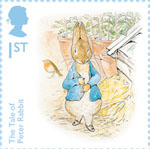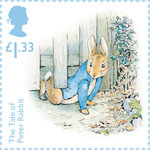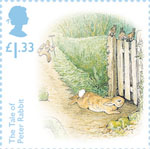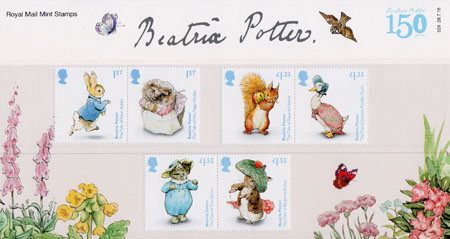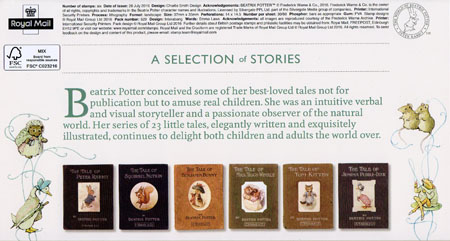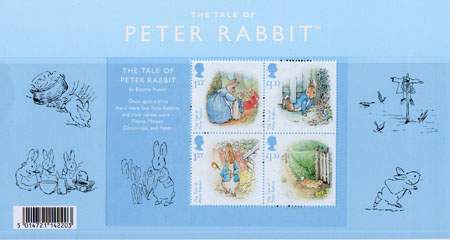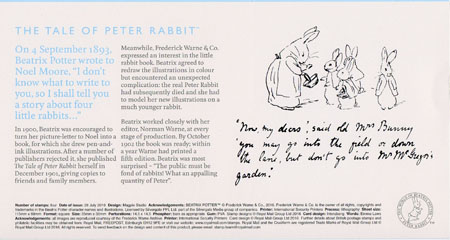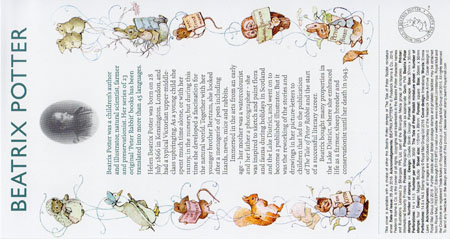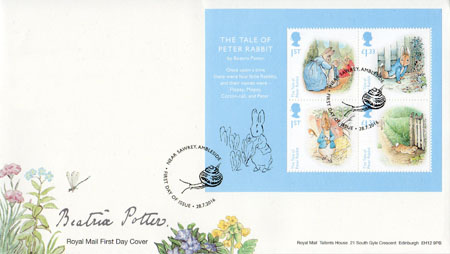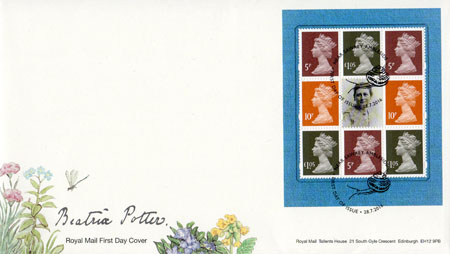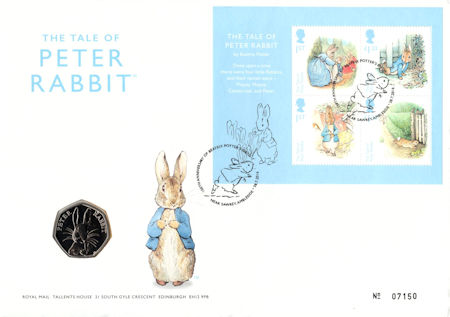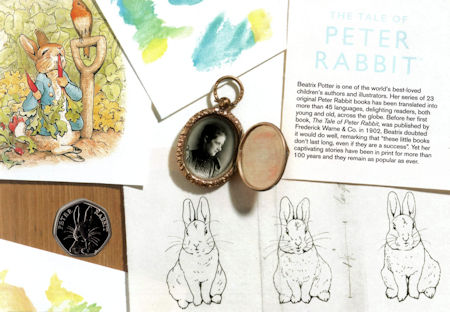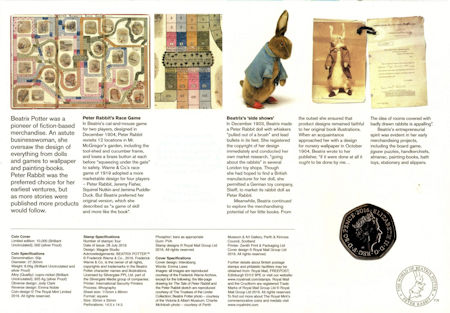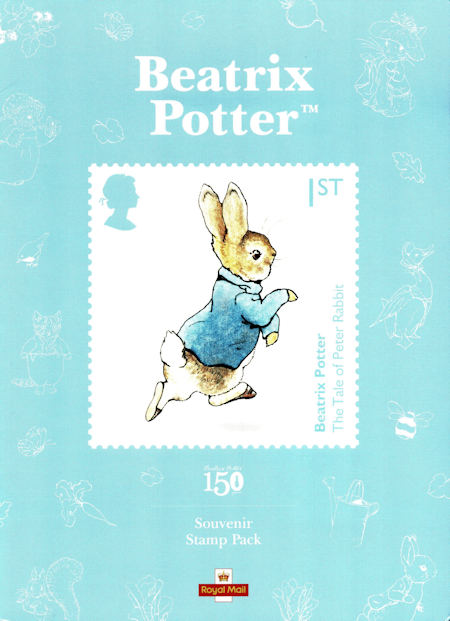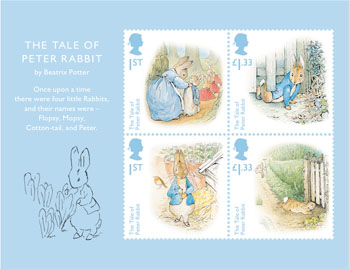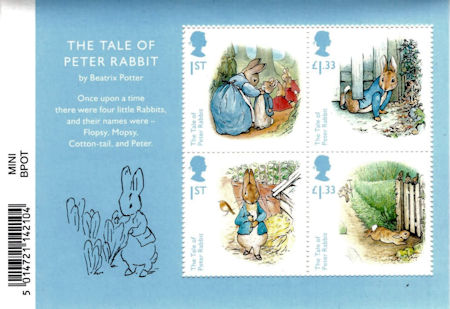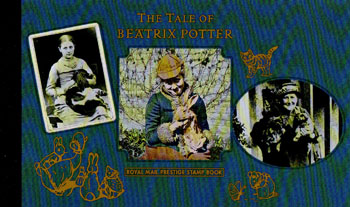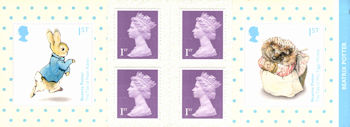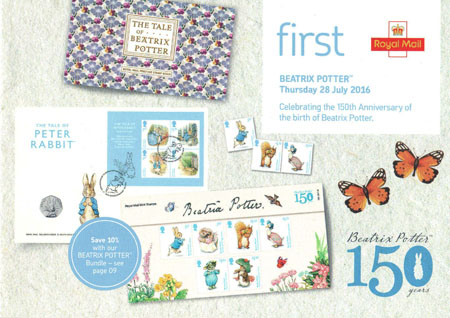Beatrix Potter
 Beatrix Potter Special Stamps
Beatrix Potter Special Stamps
Beatrix Potter is one of the UK’s most popular and celebrated children’s authors. Global lifetime sales stand at over 250 million copies. They are published in 45 languages and are available in 110 countries around the world
2016 (July 28 2016)
Commemorative
Designed by Charlie Smith Design
Size 35mm (h) x 37mm (v)
Printed by International Security Printers
Print Process Lithography
Stamps
The Tale of Peter Rabbit
1stImage preview by Royal Mail
When Mrs. Rabbit leaves for the baker’s, Peter runs straight to Mr. McGregor’s garden and squeezes under the gate. A terrifying cat-and-mouse game ensues, during which Peter loses both his shoes and his new jacket. Beatrix conceived the story of Peter Rabbit in September 1893 in a delightfully illustrated letter to Noel Moore, the five-year-old son of her friend and former governess, Annie Moore. Beatrix had purchased the real Peter Rabbit two years earlier in Shepherd’s Bush, London, and drew inspiration for the setting of her published tale from several locations, including the potting shed at Bedwell Lodge in Hertfordshire, and gardens at Lingholm in Keswick, Cumbria and Tenby, Pembrokeshire.
The Tale of Mrs. Tiggy-Winkle
1stImage preview by Royal Mail
Between 1871 and 1881 the Potters spent the summers at Dalguise House in Perthshire. Kitty MacDonald was their washerwoman, “a comical, round little woman”, who wore a “multitude of petticoats and a white mutch”. Beatrix located her tale in the picturesque Newlands Valley with the slopes of Catbells rising in the distance. The real Mrs. Tiggy-Winkle was a comical model; if “propped up on end for half an hour” the hedgehog would “yawn pathetically” and bite.
The Tale of Squirrel Nutkin
£1.33Image preview by Royal Mail
Beatrix wrote the story in a picture-letter to Noel Moore’s sister, Norah, in September 1901, having conceived the idea for it four years earlier in a letter to Noel. On both occasions, Beatrix was residing at Lingholm, a house on the north-west shore of Derwentwater with dramatic views across the lake to St. Herbert’s Island – Owl Island in the story.
The Tale of Jemima Puddle-Duck
£1.33Image preview by Royal Mail
Beatrix dedicated her “farmyard tale” to Ralph and Betsy Cannon, the children of her farm manager at Hill Top Farm in Sawrey. Her illustrations depict the Cannon family, the farmhouse and its outbuildings, the Tower Bank Arms public house and other village locations, including a magnificent view across nearby Esthwaite Water. Jemima was the name of one of the ducks at Hill Top Farm. Kep, however, was Beatrix’s favourite sheepdog, and the “intelligent and sympathetic” hero of her story.
The Tale of Tom Kitten
£1.52Image preview by Royal Mail
The tale was the first to be located at Hill Top. Beatrix borrowed the name Tabitha Twitchit from a cat belonging to the wife of the local Sawrey blacksmith. In 1906 Beatrix was planting her garden with cuttings from neighbours, “something out of nearly every garden in the village”. Many flowers depicted in her tale survive, including the roses, snapdragons and Japanese anemones around the porch.
The Tale of Benjamin Bunny
£1.52Image preview by Royal Mail
The setting for the tale is Fawe Park, a commodious house on the north-west shore of Derwentwater. Beatrix stayed there with her family in 1903 and sketched “every imaginable rabbit background”, including an assortment of flower pots, cold frames and tubs in the kitchen garden. The real Benjamin Bunny, however, had come “to a premature end” years earlier “through persistent devotion to peppermints”.
PHQ Cards

